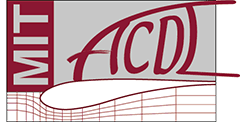There are the following issues with existing numerical methods for elastodynamics problems: a) a large dispersion error of space-discretization methods may lead to a great error in space; b) due to spurious high-frequency oscillations, the lack of reliable numerical techniques that yield an accurate solution of wave propagation in solids; c) the treatment of the error accumulation for long-term integration; d) the increase in accuracy and the reduction of computation time for real-world dynamic problems. A new numerical approach for computer simulation of the dynamic response of linear elastic structures is suggested. The new technique is very general, and would be of equal value in such diverse applications as: earthquakes; elastic and acoustic wave propagation; crashes; dynamics testing of aerospace vehicles, airplanes, bridges and buildings; and others. The new approach, which resolves the issues listed, includes two main components: a) a new dispersion reduction technique for linear finite elements as well as for high-order isogeometric elements (the order of the dispersion error is reduced by a factor of 2 from 2p to 4p where p – is the order of the polynomial approximation), and b) a new two-stage time-integration technique which includes a new two-stage solution strategy with the stage of basic computations and the filtering stage, a new exact analytical a-priori error estimator in time for second- and high-order methods; and a new calibration procedure for the quantification and filtering of spurious oscillations; new criteria for the selection of time-integration methods for elastodynamics. In contrast to existing approaches, the new technique does not require guesswork for the selection of numerical dissipation and does not require interaction between users and computer codes for the suppression of spurious high-frequency oscillations. Different discretization methods in space such as the low- and high-order finite elements, the spectral elements, the isogeometric elements, and others can be used with the suggested two-stage time-integration approach. The comparative study of these space-discretization methods for elastodynamics is presented. 1-D, 2-D and 3-D numerical examples show that the new approach yields an accurate non-oscillatory solution for impact and wave propagation problems and considerably reduces the number of degrees of freedom and the computation time in comparison with existing methods. Using the new approach, wave propagation and structural dynamics problems are uniformly solved. The new numerical technique is applied to the analysis of wave propagation in the components of the Split Hopkinson Pressure Bar (SHPB). A good agreement between the numerical and experimental results for wave propagation in the SHPB is obtained at impact loading. We have also applied the new technique to fracture mechanics for the analysis of stresses in members with cracks under impact loading. It is interesting to note that the calculation of the dynamic stress intensity factor for such problems is more accurate with the new approach than with the approaches based on the introduction of the crack tip enrichment functions (e.g., XFEM).
Speaker Bio: Dr. Idesman is an Associate Professor in the Department of Mechanical Engineering at Texas Tech University. His research interests include the development of numerical algorithms for wave propagation in solids, the development of high-order accurate time-integration methods for elastodynamics problems, the modeling of wave propagation in the Hopkinson Pressure Bar, the development of numerical algorithms for nonlinear problems with inelastic materials at small and large strains, the modeling of phase transformations in shape memory alloys. Dr. Idesman has authored and co-authored 83 journal and conference papers.

